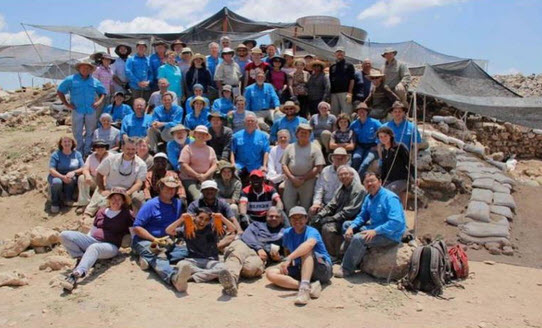What and who is…
Shiloh
Hebrew: שִׁילֹה —transliteration: Shiloh
This is a particular important Biblical place and a reference to the Messiah. The name of Shiloh the place is derived from שלה and may be translated as “Tranquility Town”—a place of peace.
-
Shiloh, an Israelite city in Ephraim
For 300 years, it served as the spiritual capital of the Hebrew people, the home of the Tabernacle and the Ark of the Covenant.
Shiloh was a city of the Tribe of Ephraim, 10 miles (16km) north side of Bethel (Judges 21:19). Archaeologists have positively identified ancient Shiloh’s location, which is called Khirbet Seilun (Arabic name), an archaeological mound, called in Modern Hebrew Tel Shiloh. The modern inhabited city is called Shiloh or Seilun.
The correct site of ancient Shiloh was first identified in modern times by Bible scholar Edward Robinson using Scriptures details as a guide.
Tel Shiloh and modern Shiloh—satellite view. The Tel is located on Road of the Partriarchs, the road from Jerusalem to modern Nabulas, the site of ancient Shechem, aka Sychem and Sychar). It is 19 miles (31 kilometers) north of Jerusalem.Here the Tabernacle of God was set up after the Conquest of Canaan (Joshua 18:1-10), and it remained here for about 3 centuries, during all of the period of the judges till the ark of the covenant fell into the hands of the Philistines.
500 years after its destruction, it was referred to by the prophet Jeremiah (Jer. 7:12; Jer. 7:14; 26:4-9).
“But go now to My place which was in Shiloh, where I made My name dwell at the first, and see what I did to it because of the wickedness of My people Israel. And now, because you have done all these things,” declares the Lord, “and I spoke to you, rising up early and speaking, but you did not hear, and I called you but you did not answer, therefore, I will do to the house which is called by My name, in which you trust, and to the place which I gave you and your fathers, as I did to Shiloh.” —Jeremiah 7:12-14 NASB
“No spot in Central Palestine could be more secluded than this early sanctuary, nothing more featureless than the landscape around; so featureless, indeed, the landscape and so secluded the spot that from the time of St. Jerome till its re-discovery by Dr. Robinson in 1838 the very site was forgotten and unknown.”
Christian Answers Team Member Associates for Biblical Research (ABR) has done much archaeological work at Shiloh and has ongoing digs there—collecting additional evidence that supports the reliability of Scripture.
 One of ABR’s archaeological excavation teams at ShilohStreaming video—Archaeological discoveries at Shiloh in 2018Streaming video—“Amazing Discoveries from Shiloh 2023”
One of ABR’s archaeological excavation teams at ShilohStreaming video—Archaeological discoveries at Shiloh in 2018Streaming video—“Amazing Discoveries from Shiloh 2023”More information
- What is the TABERNACLE? Answer
- What is the Ark of the Covenant?
- What is a covenant?
- Who is Eli, high priest and judge?
- What is a Shilonite?
- Who is Ahijah (Achiyah)?
- What are The Waters of Shiloh?
- What is the Tribe of Ephraim?
- What is Taanath-shiloh?
-
Shiloh, a name of the Messiah
Shiloh is an ancient Hebrew word and appears to mean “He Whose It Is” or “He Who Is to be Sent” or “that which belongs to him.”
The name appears in Genesis 49:10:
The sceptre shall not depart from Judah,
nor a lawgiver from between his feet,
until Shiloh come;
and unto him shall the gathering of the people be.“The scepter shall not depart from Judah,
Nor the ruler’s staff from between his feet,
Until Shiloh comes [or Until he comes to Shiloh; or Until he comes to whom it belongs],
And to him shall be the obedience of the peoples.” —Genesis 49:10 NASBThe Vulgate Version translates the word, “he who is to be sent,” in allusion to the Messiah; the Revised King James Version, margin, “till he come to Shiloh;” and the Septuagint, “until that which is his shall come to Shiloh.”
It is most simple and natural to render the expression, as in the King James Version, “till Shiloh come,” interpreting it as a proper name.
Compare Isaiah 9:6 KJV:
“For unto us a child is born, unto us a son is given: and the government shall be upon his shoulder: and his name shall be called Wonderful, Counsellor, The mighty God, The everlasting Father, The Prince of Peace.”
More information
- Who is the MESSIAH? Answer
- Names of God